Catalogue > List by artist
Browse the entire list of Rencontre Internationales artists since 2004. Use the alphabetical filter to refine your search. update in progress
Birgit Rathsmann
Catalogue : 2008White Out | Art vidéo | dv | couleur | 3:15 | Allemagne, USA | 2006
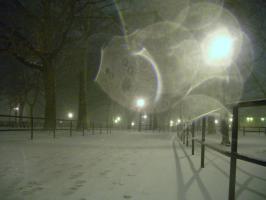
Birgit Rathsmann
White Out
Art vidéo | dv | couleur | 3:15 | Allemagne, USA | 2006
"White Out" est un film d'animation en single channel réalisé à partir de photographies numériques. Il s'agit d'une expérience minimaliste dans laquelle les images d'une rencontre nocturne dans un parc de Brooklyn rappellent celle d'un film noir. Un blizzard en image numérique vient peu à peu envahir le cadre, jusqu'à ce que l'écran soit entièrement blanc.
Birgit Rathsmann a reçu des bourses de la NYSCA, de l'Illinois State Arts Council, du Colombia College, de la MacDowell Colony, de la Skowhegan School of Painting and Sculpture et de l'Atlantic Art Center. Ses vidéos ont remporté des prix au South by Southwest Film Fest, au Palm Springs Film Fest, au Telluride IndieFest, à Raindance et ont été montrées dans de nombreux festivals internationaux et dans de nombreux centres. Ses installations vidéo ont pu être vues au Bemis Center, à Omaha et à Kamiyama, au Japon. Elle enseigne l'animation numérique à la New York University et vit à Brooklyn, NY.
Miguel Rato
Catalogue : 2015Meeting Point | Doc. expérimental | hdv | couleur | 10:4 | Portugal | 2014
Miguel Rato
Meeting Point
Doc. expérimental | hdv | couleur | 10:4 | Portugal | 2014
The imagined city as a simulation takes over the real one. Desire and reality meet creating a new space with its own rules. Ever sprawling suburban areas, anonymous landscapes generated by computers, places with no memory, landmarks, residential projects. Staged scenery for action to take place. Mostly filmed in London, Meeting Point is a study of urban space and of its representations, the virtuality of contemporary public space and landscape.
Miguel Rato (1986, Lisbon) studied Sound and Image at ESAD Arts and Design School (Portugal) and Documentary Film at London College of Communication, University of the Arts London. His film and photography work has been exhibited in the United Kingdom, Peru, United States, Spain, Canada, Holland and Portugal.
David Jeremy Rauschning
Catalogue : 2012Es sind noch Bilder übrig I | Doc. expérimental | dv | couleur | 7:45 | Allemagne | 2010
David Jeremy Rauschning
Es sind noch Bilder übrig I
Doc. expérimental | dv | couleur | 7:45 | Allemagne | 2010
David J. Rauschning, geboren 1980 in Bergen auf Rügen. Ausbildung zum Film- & Videoeditor und Studium der Montage an der HFF ?Konrad Wolf? in Potsdam-Babelsberg. Schnitt von Dokumentationen, Werbung, Musikvideos für TV & Kino und preisgekrönten Kurzfilmen. Ab 2008 erste eigene Videoarbeiten und Gastvorlesungen an der HTW Dresden. Lebt und arbeitet in Berlin.
Nassif Rawane
Catalogue : 2018Sokun Al Sulhufat (Turtles Are Always Home) | Doc. expérimental | hdv | couleur | 11:39 | Liban | 2016
Nassif Rawane
Sokun Al Sulhufat (Turtles Are Always Home)
Doc. expérimental | hdv | couleur | 11:39 | Liban | 2016
I left Lebanon in 2006. For the past 10 years I lived in 7 countries, 10 cities, and 21 homes. I slept in 21 beds, cooked in 21 kitchens, cleaned 21 bathrooms, wrote on 21 desks and locked 21 doors behind me. I packed all of my life into two suitcases and a backpack. The rest stayed behind. Somebody somewhere uses my bed, somebody somewhere has my shoes, somebody somewhere maybe remembers me in those fragmented traces of mine. I was there. But now I am here. In Qatar. In a fake Venice with colorful houses. Houses have memories too. They hide them under their windowsills, tuck them in layers of paint and sometimes whisper them to birds passing by. I wonder whose memories will these houses keep. I live here but I am unable to leave a trace. I try to attach myself to the walls, dirty them, mark them… but I fail. They are constantly cleaned, watched and protected. I caress them instead. And I film them, lest I forget. Home is where the heart is, they say. I disagree. My heart is everywhere. It left with the music. Like a turtle, I am always home.
Rawane Nassif is a Lebanese/Canadian filmmaker and anthropologist. She works in research and films often addressing subjects such as space, traditions, identities, displacement and memory. Rawane has directed social documentaries and wrote a book on the politics of memory in Lebanon, worked with immigrants and indigenous people in Canada, conducted visual research on nomadic traditions in Kyrgyzstan, taught anthropological courses in Tajikistan, wrote children’s books based on oral histories in Honduras and worked as a film researcher with the Doha Film Institute and the National Museum of Qatar. Her short film, “ Turtles are Always Home ” screened at numerous film festivals including the Berlinale, AFI Docs, Toronto, Camden, and RIDM. She is currently completing a mentorship with the “ Masters in Experimental Cinema, Creative Documentaries, and Video Creation ” Program at the Transforming Arts Institute in Madrid.
Zazie Ray-trapido
Catalogue : 2023The Instability of Clouds | Doc. expérimental | 16mm | couleur | 15:16 | USA | 2023
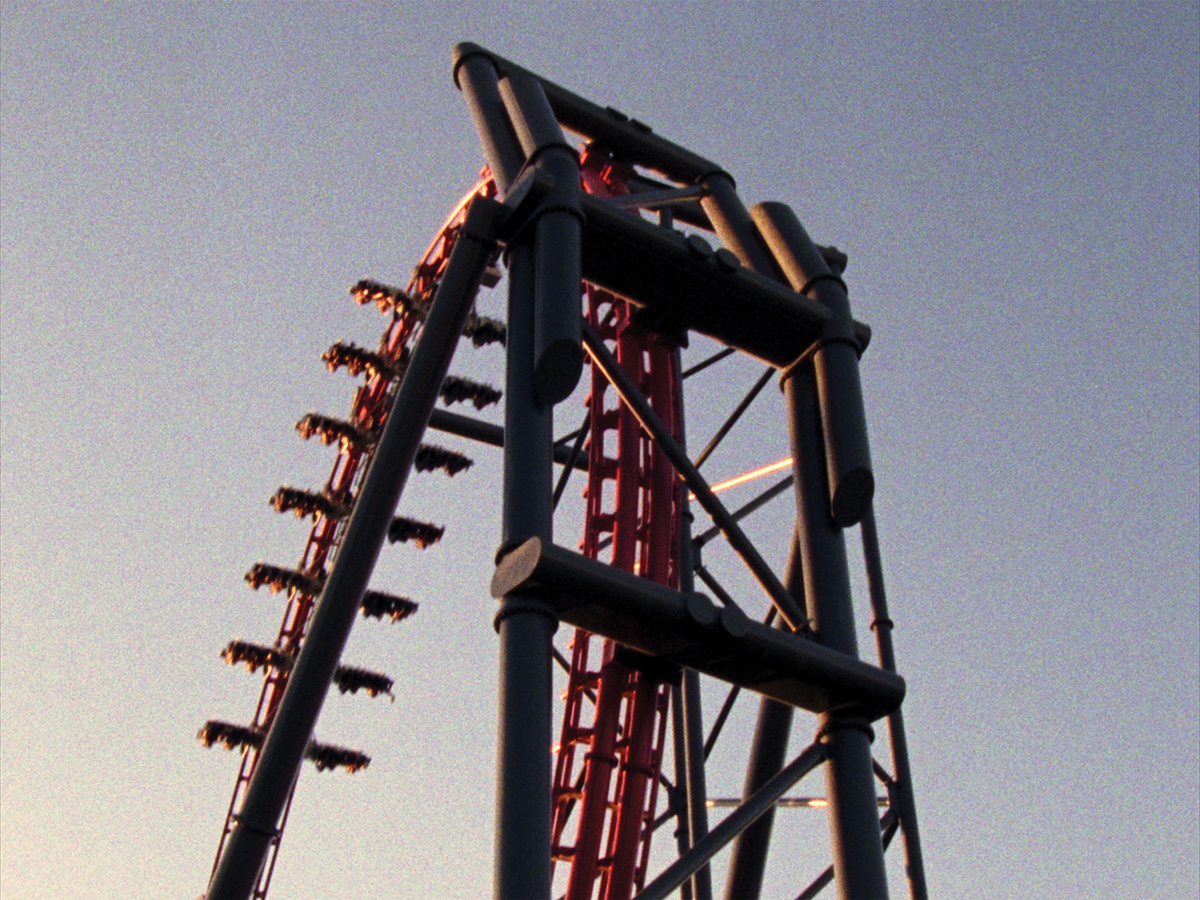
Zazie Ray-trapido
The Instability of Clouds
Doc. expérimental | 16mm | couleur | 15:16 | USA | 2023
Two neighbors bond after a shared traumatic event, a continuous home development creeps into nature's threshold, and a community celebrates freedom. The Instability of Clouds navigates an ecosystem in decay and growth while traversing across its spaces of comfort, spectacle, and disaster. Through the observation and construction of facets within a suburban neighborhood in Southern California, connections between landscape, neighbors, and environment ruminate on the American Dream and its resonances.
Zazie Ray-Trapido is a filmmaker and producer from Philadelphia, based in Los Angeles and New York. Her experimental and documentary films create narrative vignettes of the quotidian and personal. Her films have screened at the New York Film Festival, REDCAT, Curtas Vila do Conde, Athens International Film and Video, Antimatter, Engauge, Bideodromo, San Diego Underground, The Clemente Center, Mimesis, and others. She holds a Theatre and Performing Arts degree from Bard College and a master’s in Film/Video from the California Institute of the Arts.
Mohd Naguib Razak
Catalogue : 2007Glass enclosure: Tokyo invisible | Doc. expérimental | dv | couleur | 80:0 | Malaisie | 2005
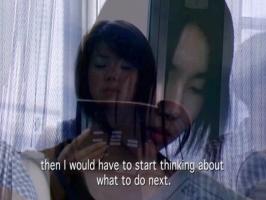
Mohd Naguib Razak
Glass enclosure: Tokyo invisible
Doc. expérimental | dv | couleur | 80:0 | Malaisie | 2005
Comme plongé dans un rêve récurrent, l'écrivain se réveille encore et encore dans une enceinte de verre. Il abaisse le regard et observe le flot de gens microscopiques circulant ici et là. Observant l'appel pressant de la nature, son va-et-vient. Est-ce ici son enceinte de vie? Est-ce là la leur? Et quand le crépuscule s'installe, ses émotions en font de même, elle montent, descendent, espèrent, souhaitent, entendent, écoutent. Cette ville, cette super grande ville. Tokyo. toh-kyoh. Il ne sait pas ce qu'il fait là, ne se rappelle pas si l?idée qui l'a amené jusqu'ici était bonne ou mauvaise. Ce n'est pas amusant d'être perdu tout seul à Tokyo. Il réfléchit. Puis des voix se font entendre. Elles parlent de solitude, de détresse, de calme désespoir. Rien de perdu dans la traduction, leur solitude résonne fort et clair. La même solitude qui étrangle son âme. Ces voix sont toujours là, mais voilà que certaines s'attardent, parlent d'espoir, de changement ou de gentillesse inattendue, diminuant d'intensité. L'écrivain se calme, il se rend. jusqu'à ce qu?il ne reste que...
MOHD NAGUIB RAZAK écrivain, réalisateur, producteur Après avoir débuté comme rédacteur publicitaire et journaliste pour des magazines, Mohd Naguib Razak s?implique dans la création artistique, se lançant dans tous genres de travaux avant-gardistes, allant de l'écriture poétique à la composition de romans graphiques, en passant par les performances de rue improvisées et les théâtres de jazz expérimentaux, avant de se résoudre à une carrière dans le film et la télévision. Il n?arrive toujours pas à se décider entre devenir écrivain, réalisateur ou producteur. Après avoir travaillé quatre ans dans la production télévisuelle, comme réalisateur et scénariste dans ASTRO, la première émission télévisée émise par satellite par la compagnie de réseaux malaisienne, et comme écrivain de long métrage dans Astro Shaw, il décide d'avancer à la recherche de nouveaux défis. Un petit film documentaire expérimental appelé « Anak Duyung » (L?Enfant de Sirène) l'emmène au Festival international du film documentaire de Yamagata en 1999 et cette expérience lui ouvre des portes sur le monde merveilleux du documentaire. 2001 est un tournant pour sa carrière : il est choisi pour écrire, produire et diriger un documentaire pour Discovery Channel. Le film, intitulé « The Boat-maker and the Sea » (Le Constructeur de navires et la Mer), a finalement été diffusé dans 80 millions de foyers à travers toute l'Asie et ultérieurement récompensé Meilleur Film-documentaire au Festival du film Malaisien en 2003. En 2002, il fait un séjour de six mois au Japon en 2002 en tant qu'artiste-résident de la Fondation de la Compagnie Japonaise. C'est là qu'il conçoit et filme « Glass Enclosure: Tokyo Invisible », documentaire de long métrage qui a participa à trois compétitions internationales (au 4ème Festival International du Documentaire de Taiwan en 2004, le 10ème It's all true-Festival du Film Documentaire de Sao Paulo et Rio de Janeiro en 2005, et la 2ème Documenta du Festival du film documentaire de Madrid en 2005). En 2005, il est brièvement Directeur Général au service des programmes de diffusion de l'union Asie-Pacific (ABU) à Kuala Lumpur. Responsable de l?organisation et de la coordination des différentes coproductions internationales, il s?occupe également des programmes d'échanges tels que les Prix ABU Télévision & Radio. Il fait partie à présent de la Fondation de la Compagnie Nippone pour le Public des Intellectuels d'Asie (API) et résidera un an à Tokyo afin de poursuivre des recherches pour un documentaire sur le thème de la spiritualité dans l'Utopie matérielle au Japon.
Maria-leena Räihälä
Catalogue : 2007sans titre | Animation | | noir et blanc | 4:0 | Finlande, Allemagne | 2006
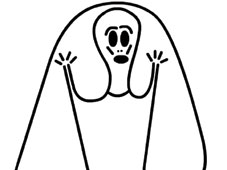
Maria-leena RÄihÄlÄ
sans titre
Animation | | noir et blanc | 4:0 | Finlande, Allemagne | 2006
The artist presents ten minimalist flash-animated drawings, trying to respect the original handmade ones. Together they build a series, but every small loop definitely has its own story: 001 is a female figure trying to fly out of his monitor 002 is a another female with a ghost in her head 003 in this third one she is trying to find a balance for her hat (or maybe better: her head) while her hands are only sticks 004 is a morning bird living in a spruce 005 is a female figure from the series "flirting with flowers". Her head is communicating with... 006 ...basil, which the artist saw last spring growing in his garden. He had the feeling that while coming trough the earth they were like small babies opening their mouths, hungry for life 007 is a girl who merges with her chair so that she looks like a strange animal (the artist thinks it might just be him sitting too much at home) 008 is the only male figure, he is called Boxer. He has a very sad end by a brave young woman 009 is a very angry young woman 010 is called "blähungen" (flatulence). These animations have a very simple self-made sound in the background (even some stolen pieces from Finnish folk-songs were used as a loop).
Maria-Leena Räihälä was born on July 16, 1964. After her art studies at the "Nordic Art School" (Kokkola, Finland 1984-87) she moved to Berlin and hit the underground art scene (e.g. her exhibition "Electric Angel" at the Fischbüro in 1988). The beginning techno movement both fascinated and inspired her. In the early 90s, for example, she made a lot of exhibitions at the legendary club "Ständige Vertretung". That brought her to experiments with electric pictures and multimedia installations with projections and huge photocopies of her drawings fitted perfectly with the music of the best DJs in the city. The base of her work was and continues to be drawings. For their digital versions Flash is still her favourite program no.2. Beside these she works with computer prints and large photocopies in order to produce room-filling installations. An example for this is last summer's "Morgenvogelstation", a sort of an audio-visual Gesamtkunstwerk. Huge prints of her drawings went together with pictures of historical bird song transcriptions by Heinz Thiessen (1887-1971). At the same time you could hear bird recordings by Veikko Neuvonen (Finland 1997). Eventually there were several concerts by the Berlin experimental group The RotTT under the name of "The Birds, Too". They played with all sorts of bird sounds and wore bird masks, which the artist had tailored for them. A select list where her exhibitions have been held includes: 2006 - Multimedia Happening, Berlin; Joint Exhibition, Neues Problem, Berlin 2005 - L.O.F.T, Berlin; Neues Problem, Berlin; Joint Exhibition, Gutleut 15 Ausstellungsraum, Frankfurt/Main, and Glue, Berlin; Joint Exhibition, 'Nothing except drawings Vol.2', QUARTAIR, Den Haag 2. Berliner Kunstsalon, Berlin 2004 - Joint Exhibition,Haus am Lützowplatz, Studiogalerie, Berlin; Joint Exhibition, Gallery Christa Burger, München; Hinterconti Gallery, Hamburg 2003 - Joint Exhibition, Neues Problem Gallery, Berlin 2002 - Emil Bock Institut, Berlin 2000 - Joint Exhibition, Pussy Galore, Berlin; Joint Exhibition, Neues Problem Gallery, Berlin 1999 - Joint Exhibition, Berlin Brandenburg Exhibition, Radio-Berlin 1998 - Haus am Lützowplatz, Studiogalerie, Berlin; Fruchtig Gallery, Frankfurt am Main; Walden Gallery, Berlin 1997 - Congress for Performance and Visual Art, Berlin 1995 - HTC Gallery, Berlin; Installation at Friseur, Berlin 1989 - Vanhan Galleria, Culture-Center, Helsinki, Finland; Kunsthaus Tacheles, Berlin 1988 - SoToDo Gallery, Berlin; Vincenz Scala Gallery, Berlin
Nanna Rebekka, Pernille Lystlund Matzen
Nanna Rebekka, Pernille Lystlund Matzen
Catalogue : 2020Furiernes Hus | Doc. expérimental | 16mm | couleur | 28:51 | Danemark | 2019
Nanna Rebekka, Pernille Lystlund Matzen
Furiernes Hus
Doc. expérimental | 16mm | couleur | 28:51 | Danemark | 2019
HOUSE OF FURIES is an institutional ghost story that takes its starting point in an unemployment centre in Copenhagen that recently went bankrupt. The empty basement premises have now been taken over by local departments of American test centres, where people can document their work skills to possible future employers. One hundred years ago, the same building was a workhouse, where the poor worked in exchange for board and lodging. In this mausoleum of idleness, a clairvoyant man wanders around and establishes an occult contact to the dreams and sufferings of the past, while a restless 16mm camera scans the empty corridors as if it was trying to map the tragic inner architecture of emptiness. Plastic plants, old ring binders and outdated Xerox machines are accompanied by the voices of the former job consultants who are now themselves unemployed. The film traces the historical connections between three different institutions for unemployment across the past hundred years, which still haunt the same historical building in the middle of Copenhagen. By drawing these connections, the film seeks to investigate - and lay bare - how our culture has dealt with unemployment and precarious working conditions across the past century.
Pernille Lystlund Matzen (b. 1986) and Nanna Rebekka (b. 1989) is a directing duo based in Copenhagen, Denmark. Their work concentrates on new documentary forms, video art and essayistic modes of filmmaking. In their collaborative, research-based practice, they seek to examine and unfold the untold stories that lie hidden in the monuments, buildings and material objects that surround us in our everyday life.
Pedro Rebelo
Catalogue : 2006Laut[omata].3 | création numérique | 0 | couleur et n&b | 9:0 | Portugal, Royaume-Uni | 2005
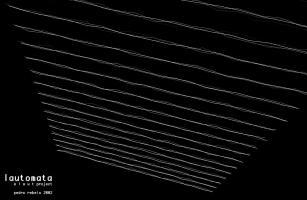
Pedro Rebelo
Laut[omata].3
création numérique | 0 | couleur et n&b | 9:0 | Portugal, Royaume-Uni | 2005
Laut[omata].3 est un travail semi génératif qui s?est développé à partir d?une activité de spectacle d?improvisation électronique et visuel. Il est fabriqué comme une manipulation de données numériques fondamentales sur des médias et construite à partir de samples et de models 3D. laut[omata] est une entité numérique qui prolonge la vie des interactions basiques de l'Homme ; c?est une entité qui tente de s'organiser elle-même grâce aux résidus numériques provenant des activités humaines. Ces résidus sont des structures comportementales initialement définies pour les stratégies d?interaction entre l?Homme et la machine.
Pedro Rebelo est un artiste et compositeur numérique né en 1972 au Portugal. Il travaille avec la musique électroacoustique, les médias numériques et les installations. Son approche de la composition musicale est enrichie par l?utilisation de l?improvisation et de structures interdisciplinaires. Il a été enrôlé dans plusieurs projets de collaboration avec des artistes visuels et a créé un large corps d??uvres explorant les relations entre l?architecture et la musique en créant des spectacles et des environnements d?installations. Cela inclut une série de pièces commandées à des solistes et des lives électroniques qui prennent comme base l?interprétation de certains espaces acoustiques. Dans le duo ?laut? avec le saxophoniste Franziska Schr?der, il explore les extensions des interfaces et le contrôle dans les pratiques de spectacles interactifs. Sa musique électroacoustique est programmée dans diveres compilations de CD (Sonic Circuits IV, Discontract III, Exploratory Music from. Portugal, ARiADA). Pedro conduit des recherches dans le domaine des médias numériques, des sons et compositions interactives. Ses écrits reflètent son approche du design et de la composition en articulant une pratique créative dans une compréhension plus large de la théorie culturelle. Pedro a eu un doctorat en composition à l?université d?Edinburgh et est en ce moment Directeur des Recherches au Sonic Art Research Center, à la Queen?s University de Belfast.
Monika Rechsteiner
Catalogue : 2008Tawisupleba | Doc. expérimental | dv | couleur et n&b | 38:30 | Suisse, Allemagne | 2007
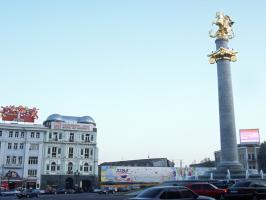
Monika Rechsteiner
Tawisupleba
Doc. expérimental | dv | couleur et n&b | 38:30 | Suisse, Allemagne | 2007
Tawisupleba - ein dokumentarischer Bild-Essay durch Georgien mit Gesprächen über die Kunst Was wissen wir über Georgien? Welche komplexen Entwicklungen Georgien seit dem Ende der Sowjetunion genommen hat, und von welchem Erbe diese Entwicklungen überhaupt ausgehen können, ist in der öffentlichen Wahrnehmung in Westeuropa weitgehend unbekannt. Welche Chancen und Umstände bietet Georgien, ein Land im Transformationsprozess, für Kunstschaffende? Was wissen wir über die zeitgenössische Kunst in Georgien? Fotografien, aufgenommen im Zeitraum von zwei Jahren, 2004 ?2006, und aktuelle Kunstvideos georgischer KünstlerInnen sind im Film zu einer Reise montiert. Zitate über Kunst, Politik und Gesellschaft, von georgischen Kunstschaffenden und Kuratoren gesprochen, ergänzen die Stimmung vor dem Hintergrund des gegenwärtigen Georgien.
Monika Rechsteiner geboren in der Schweiz, arbeitet im Bereich Film, Filminstallation, Fotografie, Film/Musik-Projekte. Seit 1998 Ausstellungstätigkeit in der Schweiz, Deutschland, Holland, Finnland, Kanada. Nach dem Studium an der Hochschule für Gestaltung und Kunst in Luzern, Schweiz arbeitete Monika Rechsteiner als Dozentin bildnerisches Gestalten und Fotografie und als freiberufliche Künstlerin. 2007 schloss sie ihr Masterstudium an der Universität der Künste in Berlin ab. Seit einigen Jahren fokussiert sie ihren Blick auf Fotografie und Dokumentarfilm. Sie lebt in Berlin und Basel.
Marc Rees, Neil DAVIES
Catalogue : 2007Comfort Zone | Performance | 0 | | 60:0 | Royaume-Uni | 2006
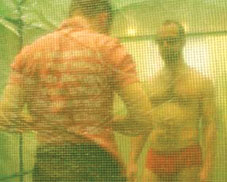
Marc Rees, Neil DAVIES
Comfort Zone
Performance | 0 | | 60:0 | Royaume-Uni | 2006
Deux hommes enfermés dans une petite maison verte, transparente, en plastique bas de gamme, isolés de leurs environnements, dans une architecture provisoire, privée et légère leur appartenant. Ils se tiennent debout sur un lit couvert de leurs propres habits en désordre, s?habillant et se déshabillant alternativement à plusieurs reprises, de façon méthodique jusqu?à ce que leur respiration obscurcisse la vue à travers les parois et que leurs habits soient imbibés par le mélange de leur transpiration. Il y a moins d?une longueur de corps qui les séparent. Qu?est ce qui se trouve entre eux, mis à part assez de vêtements pour habiller toute une piste de danse remplie d?hommes ? Imaginez un rythme battant d?une soirée disco maintenant. Imaginez danser toute la nuit exactement à cette distance. Imaginez maintenir cette distance d?espace érotique particulier qui se trouve entre nous. Imaginez que nous ne brisions jamais ce volume d?air magique pour se serrer les bras, se bloquer les épaules et combattre brièvement, nu de la ceinture jusqu?en bas, les manches retroussées et capuchons relevés, les têtes légèrement inclinées rageusement l?une envers l?autre.
Marc Ree est l?un des principal exposant au Pays de Galles d?installation et de performance contemporaines. Ses ?uvres d?arts pluridisciplinaires et innovatrices sont connues pour leurs interprétations flamboyantes, humoristiques et souvent radicales de l?histoire, la culture et de l?expérience personnelle. Il a vécu et travaillé à Amsterdam, Montréal et Berlin et a entamé par le biais de son entreprise R.I.P.E plusieurs accords artistiques à succès avec des dessinateurs-modelistes de meubles, cinéastes, auteurs, compositeurs et chorégraphes en Europe et aux Etats-Unis. En plus de travailler avec des compagnies théâtrales corporelles de renom en Grande-Bretagne (Brith Gof, Earthfall and DV8) et les principaux chorégraphes allemands, (Angela Guerreiro, Thomas Lehmen and Tanz Compagnie Rubato) son ?uvre considérable comprend les ?uvres d?étapes solos ?Iddo Ef?/ ?Caligula Disco?, le lauréat installation/performances ?The House Project?/?RevolUn?/?Shed*light? et le film paru sur la BBC ?A Very Gladys Night? Ses commissions internationales les plus récentes étaient des événements d'installation, Shed*light: "Norman Behaviour" pour ARCO 05, Madrid ,"Adagietto Ara Deg" pour le 51ème Biennal de Venise 2005,"Vaseline Machine" pour VERBO, Galeria Vermehlo, Sao Paulo 2006 et "S x 3", SINOPALE, Turkey 2006.
Total Refusal
Catalogue : 2021How to Disappear | Documentaire | dcp | couleur | 21:0 | Autriche | 2020
Total Refusal
How to Disappear
Documentaire | dcp | couleur | 21:0 | Autriche | 2020
"How to Disappear" est un film anti-guerre au sens propre du terme, à la recherche de possibilités de paix dans l'endroit le plus improbable: un jeu de guerre en ligne. Il s’agit d’un hommage à la désobéissance et à la désertion – tant dans la guerre numérique que dans la guerre physique/réelle. Tourné dans les paysages de guerre pittoresques de "Battlefield V", ce récit sous forme d'essai a pour toile de fond les graphismes hyperréalistes du jeu. Le film s'articule autour de l'histoire des déserteurs - une partie de l'histoire de l'humanité qui a peu été racontée. Des performances et des interventions créatives explorent le champ d'action et les limites de la machine de divertissement audiovisuel.
Total Refusal est un collectif ouvert d'artistes, qui critique et s'approprie artistiquement les jeux vidéo contemporains. Cependant, comme la plupart des récits de jeux vidéo grand public sont basés sur les mêmes boucles infinies de thèmes réactionnaires, le genre ne remet pas en question les valeurs des joueurs, et réaffirme plutôt des concepts moraux hégémoniques. Reconnaissant que ce média n’atteint pas actuellement son plein potentiel culturel, nous cherchons à nous approprier les espaces de jeux numériques, et à en faire un nouvel usage. En nous déplaçant à l'intérieur des jeux, mais en laissant de côté la manière prévue de jouer, nous redirigeons ces ressources vers de nouvelles activités et de nouveaux récits, afin de créer des espaces "publics" au potentiel critique.
Jeremie Reichenbach
Catalogue : 2011La mort de la gazelle | Documentaire | dv | couleur | 45:0 | France | 2009
Jeremie Reichenbach
La mort de la gazelle
Documentaire | dv | couleur | 45:0 | France | 2009
Quelque part aux confins du Sahara, des hommes se tiennent prêts à la guerre. Sous la menace d`un ennemi invisible, isolés du monde, ils vivent dans l`attente du combat. Tourné au nord du Niger, ce film est une plongée dans l`improbable quotidien des rebelles du MNJ.
JÉRÉMIE REICHENBACH Maîtrise de Cinéma Université Paris 8, sous la direction de J.L Comolli. Réalisations Teshumara, les guitares de la rébellion touareg (51 minutes) Hibou production 2005 /2006 Grand prix Sacem 2006. L?histoire Touareg à travers la musique et la poésie. Aide à l?écriture et au développement (CNC), diffusion Mezzo, Image+, France O. Festival Radio France 2005, Bilan du Film Ethnographique 2006, Nafa 2006,Traces de vie 2006,Astra film festival ?. Exploitation en salle le 23-08-2006 sur Paris et en novembre 2006 sur la province. Tinariwen (10 min) Hibou Production 2004 Film de présentation du groupe de musique moderne Touarègue « Tinariwen ». Diffusion Paris première ,Canal +. Un monde plus propre. (30 min) Les Films du Monstre / Iskra 2000. En Janvier 98 les nettoyeurs du métro de la société Comatec se mettent en grève? Festivals Cinéma et racisme 2000 Paris Berlin 2001 Cinéma social-le monde initiative 2002. Salut Vazaha. (40 min) Hibou Production 2000. Des jeunes « en difficulté » partent en mission humanitaire à Madagascar pour aider la population à construire une route. Au fur et à mesure, des tensions naissent entre le groupe des Français et celui des locaux....Diffusion Téléssonne, Zaléa TV 93700 Drancy Animation d?un atelier documentaire au collège JB Clément 93440 Dugny 2002/2003 et réalisation d?un film collectif autour de la mémoire du camp de Drancy. 1er prix du festival rencontres mémoire de la jeunesse européenne 2003. Diffusion TFJ En développement La France d ?Abou. projet de série fiction documentaire de 12 x 13 minutes. Fond d?aide à l?innovation du CNC. Le Génie Tchatcheur projet de film documentaire de 52 minutes Niamey, et le travail comment ca va ? un documentaire de 26 minutes
Jeremie Reichenbach
Catalogue : 2014QUAND PASSE LE TRAIN | Documentaire | dv | couleur | 30:0 | France | 0
Jeremie Reichenbach
QUAND PASSE LE TRAIN
Documentaire | dv | couleur | 30:0 | France | 0
Mark Reid
Catalogue : 2011Park sky split | Vidéo | dv | couleur et n&b | 5:14 | Australie | 2010
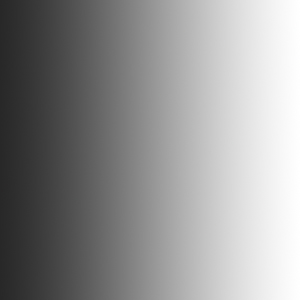
Mark Reid
Park sky split
Vidéo | dv | couleur et n&b | 5:14 | Australie | 2010
Park Sky Split is a study of temporal abstraction and rhythmic structures in video. The film presents an ambiguous black and white image, fragmented into small sections and repeated in seemingly random sequences. Brief moments of repeated rhythms and patterns are quickly broken as the film traverses back and forth across the timescale of the original footage. The film is comprised of a single piece of footage, copied and superimposed upon itself at half speed. Using digital compositing, the differences between the two videos are manifested in the frame as light, while the areas that remain the same across both images are represented by darkness. As the film progresses and this difference becomes greater, the dark areas of the frame appear to tear, filling with light. The rhythmic repetition creates a tension with the audience`s expectations of temporality in film as linear, while investigating the possibilities of visual interpretations of time.
Mark Reid is a new media artist who lives and works in Melbourne, Australia. He completed a Bachelor of Fine Arts (Honours) majoring in Media Arts at RMIT University in 2010. In 2011, Mark is moving to the United Kingdom to further explore his current body of work, which focuses on studies of place in artists` video.
Andrew Reid
Catalogue : 2007Seeking foreign policy advice from... | Création sonore | 0 | | 4:15 | Royaume-Uni | 2006
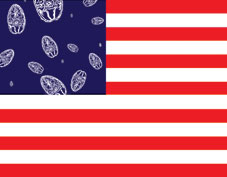
Andrew Reid
Seeking foreign policy advice from...
Création sonore | 0 | | 4:15 | Royaume-Uni | 2006
"Seeking foreign policy advice" fait partie d'un projet de création sonore en cours, explorant les enjeux du 'Culture Jamming' et du 'fair use' ou droit d'appropriation, ainsi que les problèmes de droits d'auteurs dans le domaine de la création artistique. A cette fin, l'artiste a utilisé des extraits de grands discours de politique étrangère prononcés par les cinq derniers présidents des Etats-Unis, en les replacant dans leur contexte et en les associant avec une bande-son d'applaudissements en continu (extraits d'une conférence sur le droit religieux, toujours aux Etats-Unis). L'artiste ne considère pas son travail comme nécessairement politique ou autobiographique, il s'agit bien plutôt de permettre à l'auditeur de tirer ses propres conclusions.
Andrew Reid est né en 1972 en Irlande. Il a étudié au Ducan of Jordanstone College de 2000 à 2005, où il a obtenu un Bachelor Honours et un Master of Fine Arts. Il prépare actuellement un doctorat (PhD) à l'université de Dundee.
Patricia Reinhart
Catalogue : 2014Ein Nachtstück | Installation vidéo | | noir et blanc | 5:10 | Autriche | 2012
Patricia Reinhart
Ein Nachtstück
Installation vidéo | | noir et blanc | 5:10 | Autriche | 2012
An end. Impasse. The ciné collages, 3 screenings parallel, only in black and white, without tone. The dialogue takes place between the individual scenes. By using different imaging sequences and lengths a new conflict, a new language, a new image is created. Ein Nachtstück is created in great detail from still photographs. Reinhart uses a technique to make her film loops which she has named ciné-collage. Multiple still photographs of characters and location details are collaged together in painterly layers and given just enough movement to provide a depth of colour and space. Architectural elements and public spaces of Paris are montaged together to present a destroyed, post-apocalyptic world. By using the bilateral symmetry of a building and its surroundings, or seen in the tradition of the Rorschach test, perspectives change. The world reflects itself, and seems to break and collapse. Patricia Reinhart created a world full of darkness, fear and the feeling of oppression. The disaster of the present has become an irrevocable reality. Lautréamont`s " Les Chants de Maldoror " and Max Ernst`s collages "Une semaine de Bonté" influenced Reinhart during the process of developing this work.
Patricia Reinhart studied painting at the Academy of Fine Arts in Vienna/AT and currently lives in Paris/FR. She has exhibited widely throughout Europe, including solo exhibitions at Gallery Lisa Ruyter/AT, Gallery Dana Charkasi/AT, marks blond project/CH, as well as public screenings at the beach in Venezuela and Spain. Her work has been shown in group exhibitions at Kunst im Tunnel/DE, Eglise Saint-Merry Paris/FR, Kerstin Engholm Gallery/AT, Essl Museum/AT and she also showed video work at Paris Nuit Blanche 2013. Works of her`s are included in many collections such as CCA Andratx/ES, Essl Museum/AT and Ursula Blickle Archiv - Kunsthalle Wien/AT.
Steve Reinke
Catalogue : 2017Welcome to David Wojnarowicz Week | Vidéo | hdv | couleur | 14:1 | Canada, USA | 2016
Steve Reinke
Welcome to David Wojnarowicz Week
Vidéo | hdv | couleur | 14:1 | Canada, USA | 2016
Reinke proposes a new holiday with the motto MORE RAGE LESS DISGUST: David Wojnarowicz Week and takes us through his seven days of celebration of the life of artist, writer and AIDS activist, David Wojnarowicz. Plankton, Kafka, Bette Davis, Wednesday afternoon visits with friends, more plankton, burning villages, Hollis Frampton, Sammy Davis Jr. as a libidinal machine producing sadness, opera, disembowelment, poetry.
Steve Reinke is an artist and writer best known for his monologue-based video essays, which are widely screened and collected. Originally from Canada, he know lives in Chicago and teaches in the department of Art, Theory, Practice at Northwestern.
Catalogue : 2015Rib Gets In the Way | Documentaire | hdv | couleur | 52:15 | Canada | 2014
Steve Reinke
Rib Gets In the Way
Documentaire | hdv | couleur | 52:15 | Canada | 2014
Rib Gets in the Way is narrated in the first person by Reinke and addresses mortality, the body, the archive, and the embodiment of a life’s work. The final and longest section of the video presents an animated children’s adaptation of Friedrich Nietzsche’s philosophical novel Thus Spoke Zarathustra (1883–85). The hand-drawn animations in this and earlier sections of the video are by Jessie Mott, a visual artist and writer whose work consistently engages a menagerie of human, animal, and celestial forms and with whom Reinke has collaborated on several previous videos.
Steve Reinke has long been lauded for his irreverent, philosophical, and often acerbic works, which typically adopt the form of personal essays to wryly bend and reread wide-ranging topics from pop culture to sex to theories of visual perception and beyond.
Wolfgang Reinke
Catalogue : 2007Nicht böse sein! | Documentaire | dv | couleur | 95:4 | Allemagne | 2006
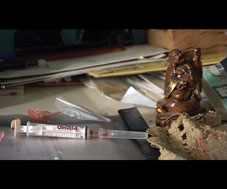
Wolfgang Reinke
Nicht böse sein!
Documentaire | dv | couleur | 95:4 | Allemagne | 2006
Johann Wolfgang est écrivain, et alcoolique. Cela fait des années que Dieter et Andi, tous deux dépendants à l'héroïne, ont trouvé refuge chez lui. 24 heures par jour suffisent tout juste à Andi pour satisfaire ses besoins en héroïne. Andi vit dans la salle de bains de Wolfgang. Dieter reporte sans cesse l'accomplissement de sa peine de prison de 100 jours par crainte de la crise de manque. Dieter habite dans la cuisine de Wolfgang. En dépit de l'impasse que représente leur dépendance et des conflits qui éclatent en permanence, ils réussissent tout de même à revenir les uns vers les autres et à réfléchir à une vie meilleure.
Né en 1974 à Güstrow, RDA 1984 - Première rencontre avec l'équipe d'un film documentaire de la télévision est-allemande, qui échoua à m'interviewer au terme d'une tentative de deux heures . 1986 - Tentative d'engagement par la "police du peuple" (VP) après un premier contact avec des "citoyens à problèmes" que j'avais justement envoyés en taule en voulant récupérer mon vélo volé. Premiers doutes prudents à propos du socialisme, après avoir vu l'intérieur de la voiture de patrouille, dans laquelle j'ai mené la police jusqu'à la bande de voleurs. 50 Marks de l'est de récompense. 1987 - Premier et dernier travail de sciences naturelles sur le thème ?Y a-t-il une vie sur Titan, satellite de Saturne?? (On n'a pas encore découvert de vie sur Titan.) 1988 - l'équipe de ?Bereitschaft Dr. Federau? (série médicale de la tv est-allemande) tourne dans notre jardin. Mon impression : une équipe de tournage se compose de porteurs de câbles . 1989 - Présentation de mon premier spectacle multimedia sur le thème "Menace nucléaire à cause de la course aux armements" . Après mon bac en 1992 étudiant sans perspective de diplôme, photographe pour des photos d'identité, vendeur de glaces, aide-maçon, conseiller ANPE, conseiller relations publiques, barman, assistant technique de reportages , photo-reporter indépendant, auteur pour "Eulenspiegel", assistant - éclairagiste, - script, et - décorateur.
Remi
Catalogue : 2006Auto_facing | Performance | 0 | | 25:0 | Autriche | 2005

Remi
Auto_facing
Performance | 0 | | 25:0 | Autriche | 2005
_________
______________